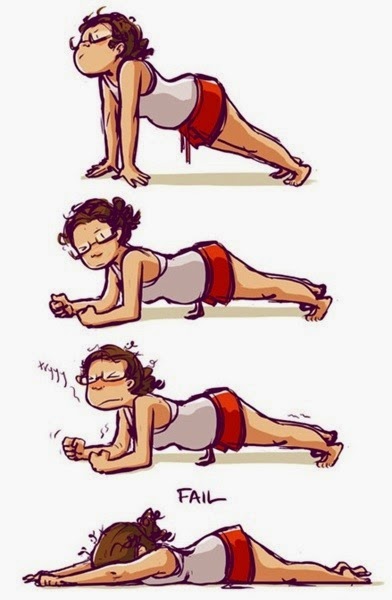Fundraising:
They shared some fundraising ideas with us. I had heard of most of these already. So, I am still very nervous about raising enough money. Any and all ideas are always welcome!
Core:
We have a coach who is dedicated specifically to our CORES. The core affects any sport that we make our bodies do. It can make all of the difference in a bike ride. And you can really injure yourself if you try to do something and your core cannot support it. So, we have core workouts throughout the week. We did some practice exercises: squats, superman's, planks (I HATE PLANKS!!!).
Workout Schedule:
They gave us our workouts for the first couple of weeks. It seems very doable. There are some people that said they don't even know how to swim yet! So, there are workouts for beginner, intermediate and advanced with each sport. Here's a look at my first week:
So, expect some updates about the training!
Nutrition:
I was a little disappointed in this section so far. It's only the beginning though, so I hope there's more information to come during the season! They talked about hydration during training and ways to get extra help (sports drinks, electrolyte pills, etc.). This shouldn't be a problem for me. I drink a lot of water normally...this is probably not helpful with my small bladder issues!
Then, they discussed foods you can eat during workouts and the race. This is mainly gels, snack bars, nuts, etc. And after workouts you should have a recovery drink of some sort that contains proteins and carbs.
And that was all for now! When signing up, they mentioned that you would need to commit to a nutrition plan for the 4 months. I thought they were going to lecture us on healthy eating and maybe even provide guidelines for caloric intake and percentages of food groups to incorporate. But, we just went over nutrition during a workout.
So, I will have to look up some more information about protein powders and come up with a diet of my own! I know that training will be easier and I will become stronger if I am eating healthy and watching what I put into my body.
Gear:
Well, this rotation was a bit discouraging. There are so many things you can buy! It was hard to tell what was a necessity and what was just really cool. As I sat through this session, my mind was exploding with dollar signs and freaking out over how I was going to afford all of this stuff! I have to raise $4,000 and pay a million dollars extra for my equipment?! What have I gotten myself into?!
This picture pretty much sums up my sentiments at that point:
By the way, this stock photo is called "Financial Stress." PERFECT.
I decided to focus on the necessities at this point. What are the things that I should be training on from the beginning? And what can I purchase later on (once my wallet has recovered from the holidays)?
So, I bought some new running shoes. I wanted a fresh pair that I could train in for the next 4 months and hopefully wear to the race. I've tried a bunch of different brands and models. I've found that these are the most comfortable for me:
Our second day of practice was a bike workshop. We showed them our bikes and we learned a lot about maintenance, setup, road safety, etc. The coaches said my bike I purchased a few months ago would be fine. Well, they basically said any bike that moves forward will work fine. I did learn about a good 15 add-on items that would be essential for my cycle training (compartments to hold tools and food, water bottle holders, pump, CO2 cartridges, extra tubes, gloves, shorts, etc.). The list was long. So, I went to Sports Basement after practice.
They said my bike would work just fine, but I would do better if I had a road bike that was designed for racing. A much lighter frame for aerodynamics and better gear shifting and brakes for the hilly course in Hawaii.
At first, we thought my dad's old racing bike would work because he has a similar inseam measurement as me. We drove home, threw his bike into my car and drove back to Sports Basement. They had me stand over the frame to check the frame height with my inseam. My leg was less than 1 inch too short! If I were to ride that bike, I could injure myself. If my leg could grow ONE inch, I would save over $1,000. If only that were possible!
So, I asked to see the cheapest women's road bike that would work for my Hawaii triathlon. Racing road bikes can be in the $10,000's. The cheapest one they had was over $1,000. With all of the input the experts had to say, I decided that I had no choice. I would have to make the investment now and figure out how to pay for it later.
Luckily, my training schedule for the next 4 months will really put a damper on my social life. So, there's one less expense!
My beloved "old" bike. I only rode it a few times! I am trying to sell it now.
I've already had to invest over $1500 into this triathlon. And there are definitely more expenses to come. So, for now, I need to focus on training and fundraising!









